Assault and attack parts of the Russian army in the First World War. Part of 3
Under the conditions of 1917, the shock battalions had to act not only at the tip of the breakthrough (ie, perform assault missions), but also to be a stronghold of order, carriers of high morale and fidelity to duty — the core around which troops could unite during the decomposition of the army loyal oath
Thus, the technical tasks (breakthrough of the positional front) gave way to the moral-fighting (an example of the valiant discharge of duty). Accordingly, special tactics and training of shock battalions began to be lost, and over time, a number of conventional units and formations fell into the category of "shock". It was enough for the personnel of the unit to decide on assigning to it the status of the “death” part, as it fell into the category of “shock”. Many volunteer units formed in the revolutionary 1917 year fell into this category.
The “oath promise” of the “death” volunteer has been preserved, in which he promised with his life, honor and freedom without question and, following the first order of the commander, execute the order and fight until victory [RGVIA. F. 2620. Op. 2. D. 67. L. 362].
The command of the current army tried to restore order in the matter of structuring the shock parts. Thus, the order No. 547 of the General Commander of the cavalry A. A. Brusilov from 27. 06. 1917 required no mix of shock and revolutionary battalions. The order clarified that the shock units (which now also included companies and “death” battalions) are formed in infantry and cavalry regiments from volunteers of these regiments and are included in the structure of the corresponding regiment. It was noted that in the infantry regiment a shock unit with the size of a battalion company was created (if the entire regiment did not wish to become a shock). The strike part was to serve as an example for the rest and go for a breakthrough in the vanguard of the regiment. The revolutionary battalions must be formed in accordance with the order of 13. 06. 1917 d. No. 439 of volunteers, junkers, soldiers of spare and other rear units.
The first shock battalions were formed mainly from the composition of the so-called "third divisions" (1916 appeared in October - February 1917). The newly formed, without any spikes and combat experience, they began to decompose faster than others, and for patriotic soldiers and officers who served in them, going into special shock units became, firstly, an opportunity to avoid humiliation and attacks from the degrading soldiers. -second, the ability to actually continue to fight with the enemy.
Lieutenant-General A. I. Denikin, during this period, the Chief of Staff of the Supreme Commander, recalled that those soldiers and officers who had a conscience or tired sad, full of profanity, laziness and mischief in army infantry left the formed attack companies and battalions shelves. In the regiments, according to the testimony of the general, the percussionists were reserved and often vicious. When the time came to attack, they went on the enemy's barbed wire, under a deadly fire - often under a hail of not only enemy bullets, but also evil ridicule from their former comrades. Considering the reliability of the shock units, they were used to reconnoitre, guard and pacify the rioters - and they "took the rap" for their entire regiment, the personnel of which gradually got out of control [Denikin A. I. Essays on Russian distemper. The collapse of power and the army February-September 1917g. Plural 2002 C. 347].
The immediate initiator of the formation of front-line attack units of the new type was (at that time) the commander-in-chief of the armies of the South-Western Front, cavalry general A. A. Brusilov, who acted with the support of the front committee. He also approved a special distinctive badge for shock battalions (“death”) - a red-black chevron downward on the right sleeve of the tunic (tunic).
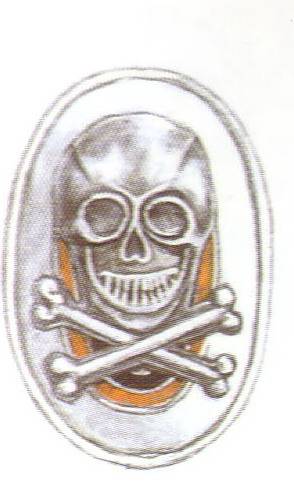
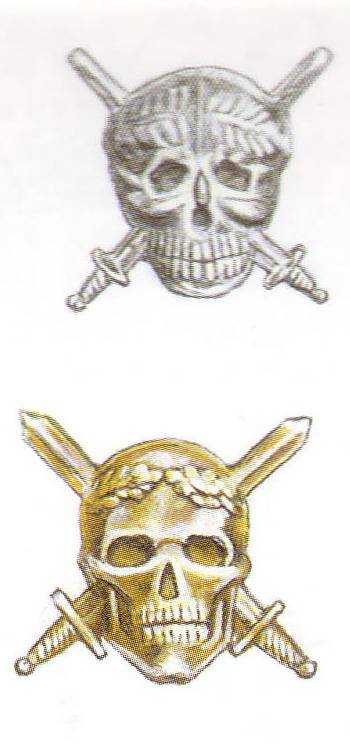
10, 11. Variants of the emblems on the headgear of the fighters of the shock and assault units of 1917 (Adam's head).
12. The banner of the "death" part.
There were a lot of volunteers among the "drummers" - the core of the shock units was young people, ready to sacrifice themselves in the name of the Motherland. Some battalions were nominal: the Kornilov shock battalion (initially called the Shock or 1 Assault Squad), the “death” battalion of the 2 rank Shishko (the Revel naval battalion “death”), etc.
The shock movement from the end of spring 1917 went "from the bottom" - and in this sense, the command only tried to take it under control.
Thus, the proposal for the formation of the shock battalion of the 8 Army came from the assistant to the senior adjutant of the Intelligence Division of the army headquarters, Captain M. O. Nezhentsev. Lieutenant General L. G. Kornilov, appointed in May by the army commander, supported this initiative. Order on the army from 19. 05. 1917 was commanded by the commander to form the 1 Shock Squad. Although MO Nezhentsev attracted experienced volunteer officers to this 6 case, freshly baked ensigns became the core of the officer corps. The first in the detachment was formed machine-gun team, and only then she "overgrown" infantry companies. L. G. Kornilov gave parts of his patronage, and in June a detachment was formed: it consisted of 2 battalions of 1 thousands of bayonets each, 3 of machine-gun commands, teams of foot reconnaissance (it included captured volunteers - Czechs) and hundreds of Cossack cavalry scouts. The detachment was entered not only one by one, but also by subunits, such as the hundreds of 38 Don Cossack Regiment and the gunners of the 3 Siberian Mining Artillery Division. The Kornilov detachment received its military baptism 25 June from the village. Pavelche, during the offensive 8 th army. In this battle, the detachment proved to be excellent and captured trophies, among which are 2 light and 4 heavy weapons [Kornilovsky Shock Regiment. Paris, 1936. C. 23]. The detachment was sent to the most dangerous sectors of the front.
13. Drummers Kornilov on the front. Summer 1917
14. The banner of the Kornilov shock regiment.
Similarly, at the initiative of the officers, the “death” battalion of the 38 Infantry Division was created: in spring 1917, the staff captain of the 152 Infantry Regiment of Vladikavkaz General Yermolov, V.P. Egorov, sent the “death” battalion to the Minister of War and, having received approval , appealed to the troops to join the movement - and the Supreme Commander-in-Chief from cavalry A. A. Brusilov and Commander-in-Chief of the armies of the Northern front, cavalry general A. M. Dragomirov supported this initiative. The battalion was recruited not by a separate battalion from the volunteers of the 19 Army Corps: mainly (for the 3 officer and 40 soldiers from each regiment) parts of the 38 infantry division. Drummers got a special form: the sleeves and the side of the tunic were trimmed with black and white ribbon, buttons and cockade, “as a sign of civil liberty” - red matter; encryption on shoulder straps consisted of a skull with bones and the number "38". On 28 June 1917, the unit consisted of 4 infantry companies and 2 special teams (machine-gun and communications) and consisted of 26 officers and about 1100 drummers [Fomin M. The death battalion of the 38th Infantry Division // Military Story. No. 8 (137). 1996. C. 27].
Only six months after the decision of A. A. Brusilov, more than three dozen shock (“death”, assault) battalions were created. New battalions were seen joining their ranks as a symbol of loyalty to the Motherland.
The realization of the political function of the strike units came to light when they were successfully used by the command to eliminate several serious military rebellions. In particular, on the Romanian front, drummers neutralized the rioting units of the 163rd Infantry Division, and on the Southwestern Front, the rebellion of the 7th Siberian Army Corps was liquidated. In addition, they fought with ever-increasing desertion: for example, the battalion of “death” of the 11th army only detained 11 people in Volochisk only during the night of July 12000 (after the failure of the June offensive of the South-Western Front] [Kavtaradze A. G. The June offensive of the Russian army in 1917 // Militaryhistorical magazine. 1967. No. 5. P. 27].
But the shock units were for the most part destroyed in the June offensive and subsequently could not contribute to the restoration of order in Russia.
At the same time, the isolation of the most healthy elements from the army, with their presence in special units, accelerated the process of the collapse of the current army.
In general, the shock battalions stood out for their high fighting spirit and good technical equipment. Special attention was paid to the formation of adhesions between the fighters of the unit, the development of a sense of mutual gain, strength of character, physical and moral endurance, education in the spirit of sacrificial service to the revolutionary Motherland. Close attention was paid to the material support of the fighters. For example, the Military Log of the 279 Infantry Lokhvitsky Regiment (the “death” regiment), when describing daily events, specifically mentions that meat soup was issued twice a day - for lunch and dinner [RGVIA. F. 2890. Op. 1. D. 65].
The increase in the number of shock troops led to the inevitable decline in their quality. So, gradually 4 corps (Guards Horse, 2 Guards, 6 and 7 Horse, 5 divisions, 32 regiment, and 53 battalion, several artillery brigades and divisions, and a number of companies, squadrons and batteries. In accordance with the order number 759 from 05. 08. 1917 of the shock regiments, artillery brigades and divisions numbered 73, and battalions, companies, squadrons and batteries - 168.
The main combat task of the shock units was to inspire with their example the soldiers mass in the name of the successful end of the war - during the last offensive of the Russian army in the field.
Despite all the efforts of the command to structure the shock units, in particular, by delimiting the shock, assault and "death" units from the revolutionary battalions, this was not fully accomplished. Thus, in the list of shock battalions of the South-Western Front, the proportion of the latter is very high.
List of shock battalions of the South-Western Front:
The 1 Revolutionary Shock Battalion, Freedom, Equality and Brotherhood;
1-th Orenburg Revolutionary Battalion;
1 Vuchachsky Lyson Heights battalion;
1 th Revolutionary Shock Regiment;
1-th Consolidated March Battalion;
1-th Omsk revolutionary battalion;
2-th Orenburg Revolutionary Battalion;
4-th revolutionary shock guerrilla battalion;
5-th revolutionary shock guerrilla battalion;
6-th Mariupol Revolutionary Shock Battalion;
7 Novonikolaevsky Revolutionary Shock Battalion;
8 Amur Revolutionary Shock Battalion;
9-th Zaamursky revolutionary shock battalion;
10 Siberian Revolutionary Shock Battalion
[RGVIA. F. 2992. Op. 1. D. 42. L. 152 about; RGVIA. F. 2620. Op. 2. D. 68. L. 323 Rev.].
As a result, structural confusion led to the fact that in accordance with the Order of the Chief Executive Officer No. 547 from 27. 06. The 1917, along with the shock formations, had separate shock battalions, as well as battalions and companies of “death” in the structure of infantry regiments and divisions (if the latter were not entirely shock). Moreover, in special cases, companies could temporarily be reduced to battalions in their divisions, but it was allowed to single out no more than a company from each regiment.
15. Petrograd. Record volunteers in the shock battalion.
Thus, in the spring of 1917, the term “shock” was synonymous with “assault”, combining the tactical features of the actions of the respective units, then the concept of “shock” was later understood as the honorary name of the unit, since actions that were not assault (that is, not specifically intended to break through and capture enemy lines and fortified areas). Officially, as already noted, the shock parts and parts of the "death" were equated. Moreover, sometimes assault battalions (for example, the assault battalion of the 28 Infantry Division) also declared themselves to be parts of "death."
By October, there were 313 different formations of "death", which included more than 600 thousand people - and the formation of the "death army" was discussed in military circles [Solntseva S. A. Decree. cit. C. 50]. This could actually be a successful prerequisite for the struggle of Russia together with the Allies in the Entente to the bitter end, even in the conditions of demobilization of the main part of the Army in the field.
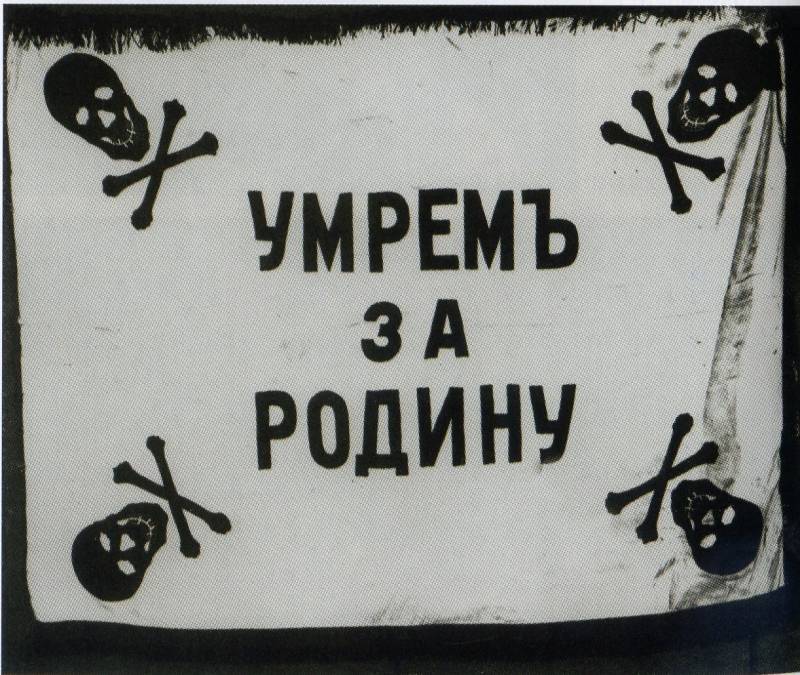
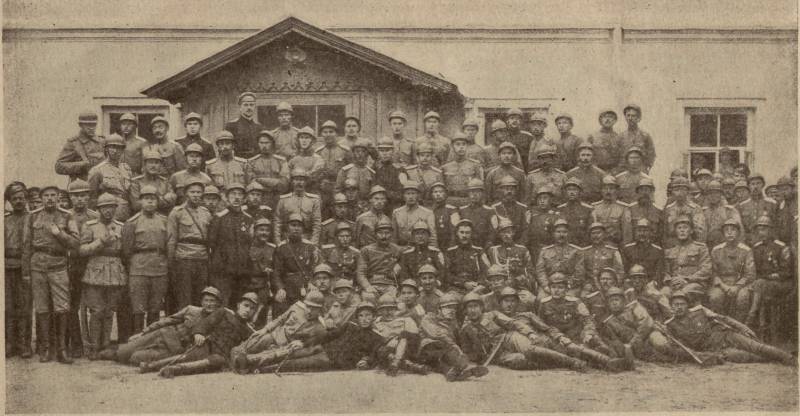
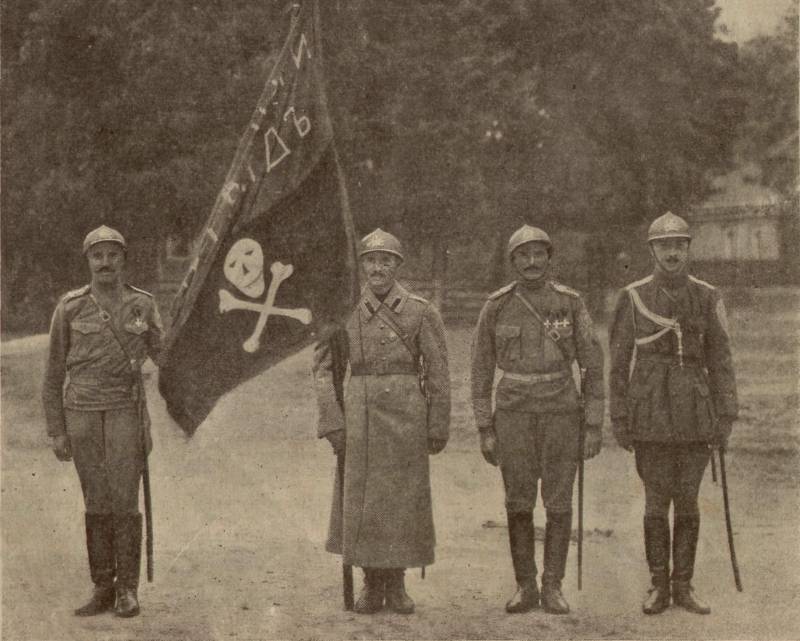
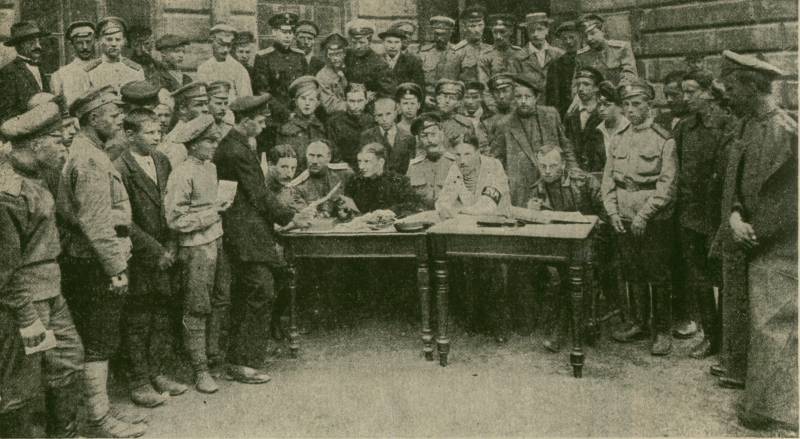
Information